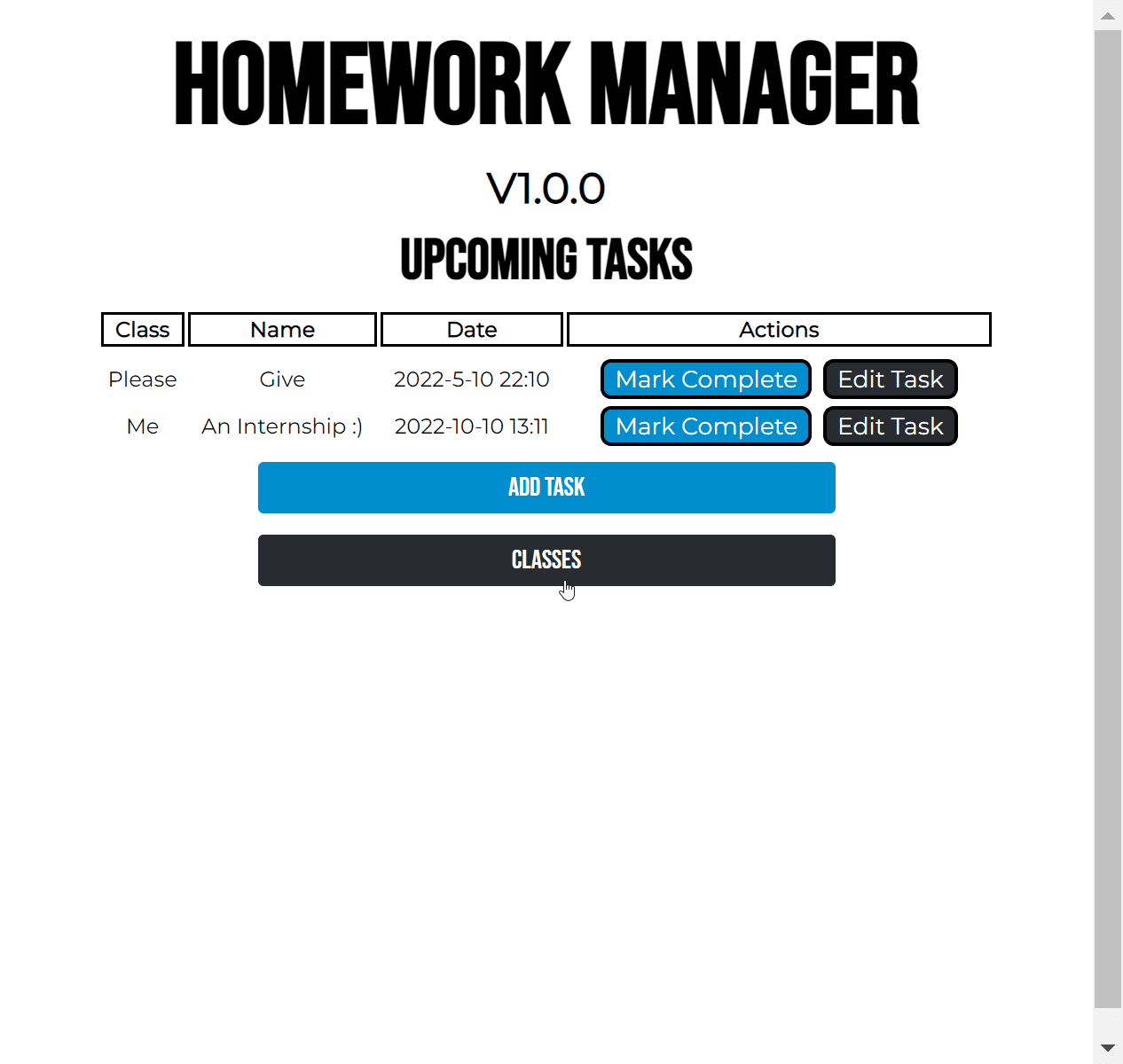
Homework Manager
A Google chrome extension that helps manage upcoming assignments and grades. The extension generates a todo-list based on upcoming deadlines and assessment weights, and calculates current grades. The extension also allows for setting additional reminders prior to the due date.
Page Navigation
Development + Implementation
I completed numerous different iterations of this project, but due to my perfectionism never truly saw it as done, but a project needs to come to an end at some point. The concept behind the project is relatively simple. Its simplicity allows me to experiment with frontend technologies and different data structures and algorithms.
Additionally, I am a strong believer in the idea that you must truly understand the technologies that you use. Due to this reason, no JavaScript Frameworks are used, and everything is done purely with Vanilla JavaScript, as well as HTML + CSS. From this I was able to learn many of the underlying features that modern frameworks utilize: the program is structured in such a way that I essentially created my own custom pseudo-framework. Will I ever do something like this again? Probably not, but it was a good experience, and has inspired me to potentially actually make a true framework in the future. (I am currently being inspired by Blazor + Svelt 👀)
I created the program with object-oriented design patterns shaped around assessments, subclasses, assignments, and tasks. These were implemented using a composite design pattern, with assessments being an abstract class and assignments and tasks extending it. This allowed assignments to have subtasks associated with them, which may also have their subtasks. This simplified grade and weight calculations, as one could quickly iterate through assessments of children to calculate the weight. Updating the parents of children was done using an observer pattern, which decreased coupling in the code.
The todo-list was implemented using a priority system. Initially, this was accomplished using a sorted array of assessments; however, this had terrible asymptotic runtimes. The to-do-list priority system had three primary functions: insertAssessment, removeAssessment, and update, which would re-sort the assessments based on priority if values in an assessment were changed. Insert/removeAssessment ran at O(n) with my initial sorted array implementation. Due to sorting, update ran at O(n^2) using the quicksort algorithm. To improve the asymptotic runtimes, I changed the implementation to a priority tree, implemented with a binary heap data model. This drastically improved the runtimes of insert/removeAssessment to O(logn) and O(n) for update. The frontend of advanced homework planner was created using HTML and CSS. Initially, this was done with the BootStrap framework; however, this is currently being redone to use CSS grid. Grid gives the same responsiveness as BootStrap but has the advantage of making the HTML more readable and making the bundle size smaller.

